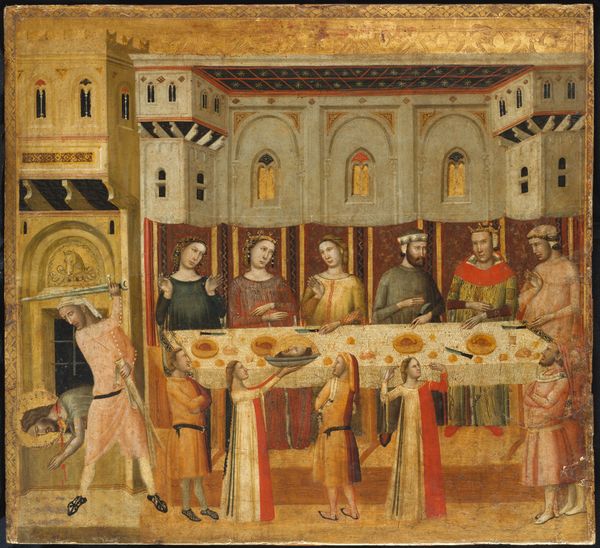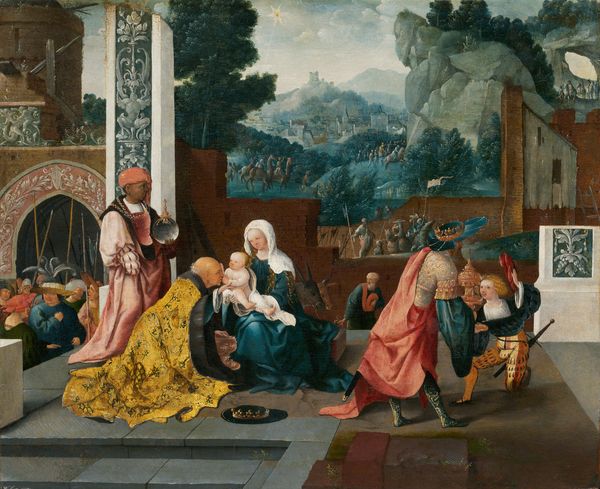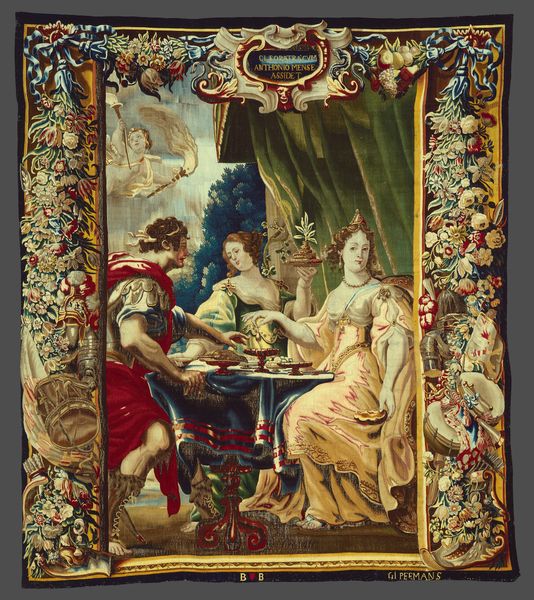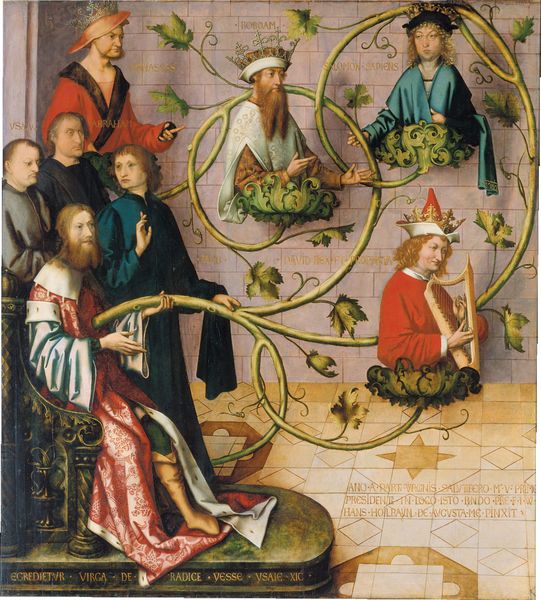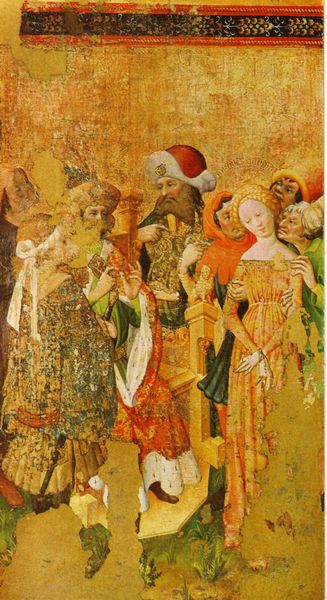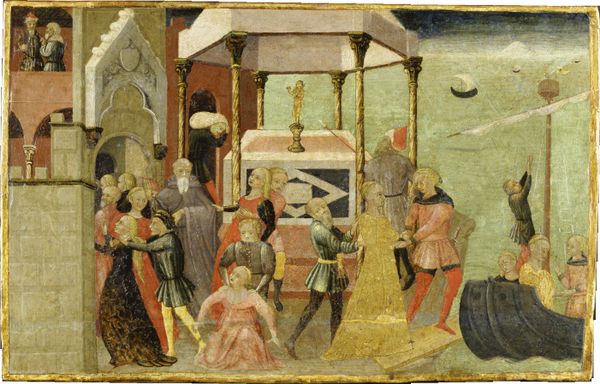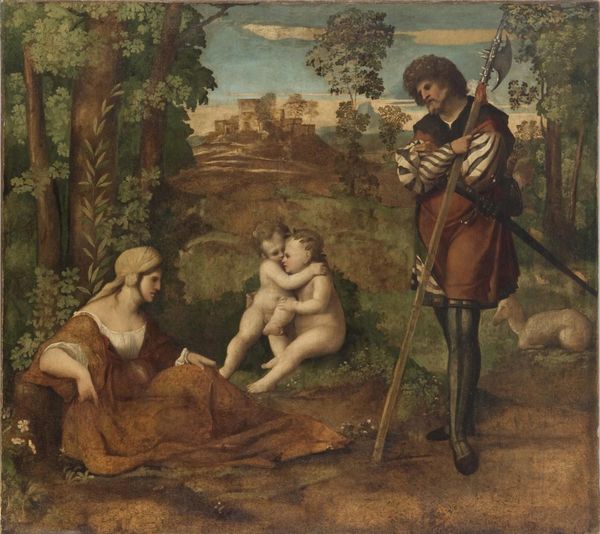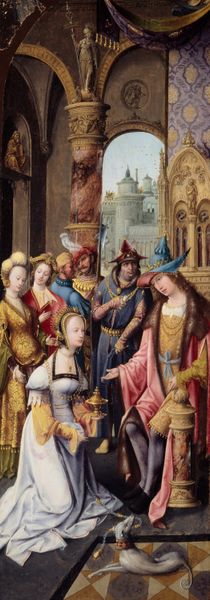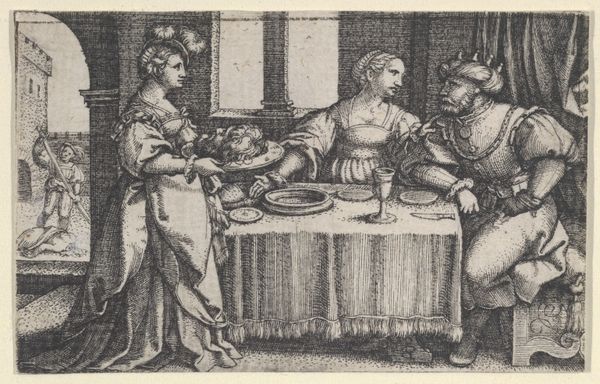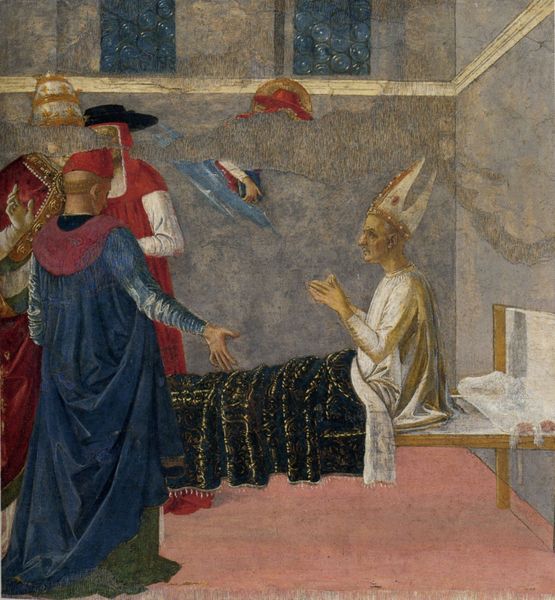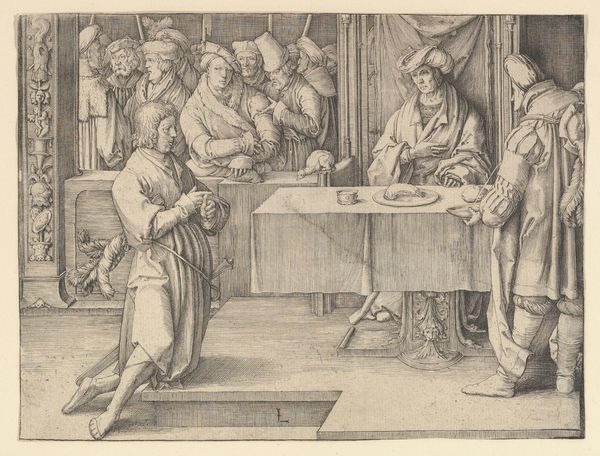
painting, oil-paint
#
portrait
#
painting
#
oil-paint
#
figuration
#
oil painting
#
men
#
painting art
#
genre-painting
#
history-painting
#
academic-art
#
italian-renaissance
Dimensions: Overall 13 3/4 x 16 1/4 in. (34.9 x 41.3 cm); painted surface 13 1/8 x 15 7/8 in. (33.3 x 40.3 cm)
Copyright: Public Domain
Curator: Here we see "The Chess Players" an oil-on-wood panel attributed to Liberale da Verona, created sometime between 1470 and 1480, currently residing at The Met. I must say, its rigid symmetry immediately grabs me. Editor: The first thing that strikes me is the cool detachment of the figures, an almost dreamlike state. Despite the chessboard implying strategy and rivalry, there's an emotional stillness that pervades the scene. Curator: Well, chess has always been more than just a game. It is a field where war and status unfold, it echoes symbolic conflict, especially in aristocratic circles. The chess game can be a symbol for courtship, diplomacy, and intellectual prowess. And the figures almost theatrically posed—are certainly aristocratic! Editor: Precisely, notice the distribution of light and shadow. The figures’ faces, while serene, are subtly shaded to create a sense of depth and individuality. It draws me into this space where something significant is happening. This chessboard and these pieces function like compositional guide, focusing the viewer’s eyes towards it as the narrative pivot. Curator: And who are these spectators hovering at the edges? Notice how their faces reflect in ways which resonate in relation to certain pieces? This could hint at alliances or strategies, offering a coded narrative for those who knew the social dynamics of the time. We often ignore the people on the fringes but in reality, they play a role of subtle instigation of how the figures may perform. Editor: Interesting. From a formal perspective, that repetition of shapes - those very stylised curly hair motifs framing each face - does suggest something ceremonial, something formalized that transcends merely representing a friendly game. Curator: Agreed. And by extension, that carefully orchestrated presentation—it speaks volumes about the values and aspirations of the Italian Renaissance. What do you think we as a collective value about strategic engagement in our own period in time? Do you feel anything of that same kind resonates still? Editor: Food for thought, indeed. Reflecting upon the artifice presented versus lived experience, certainly gives us much to take away from Liberale da Verona.
Comments
No comments
Be the first to comment and join the conversation on the ultimate creative platform.

